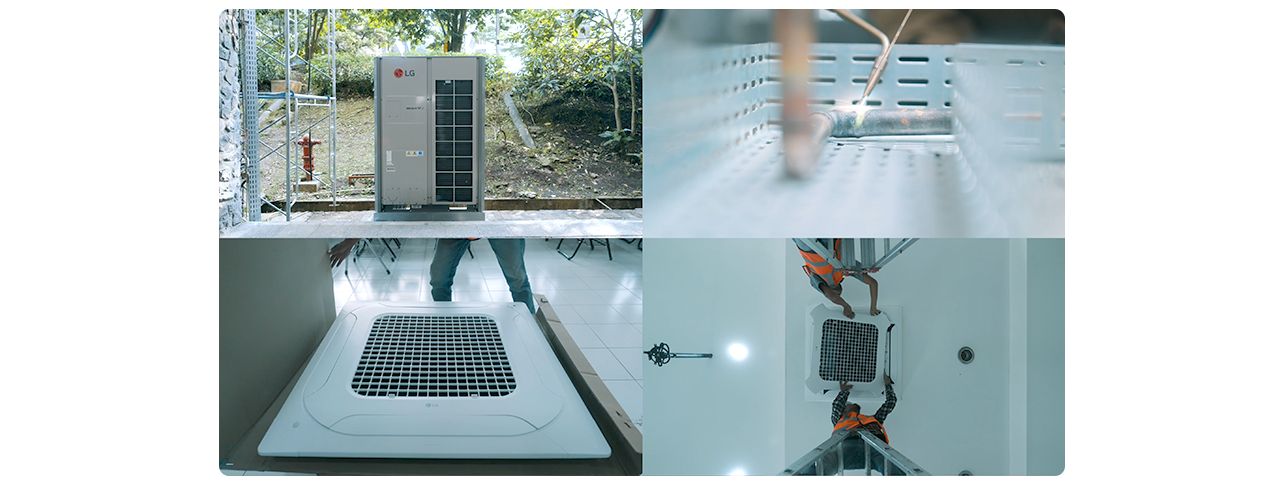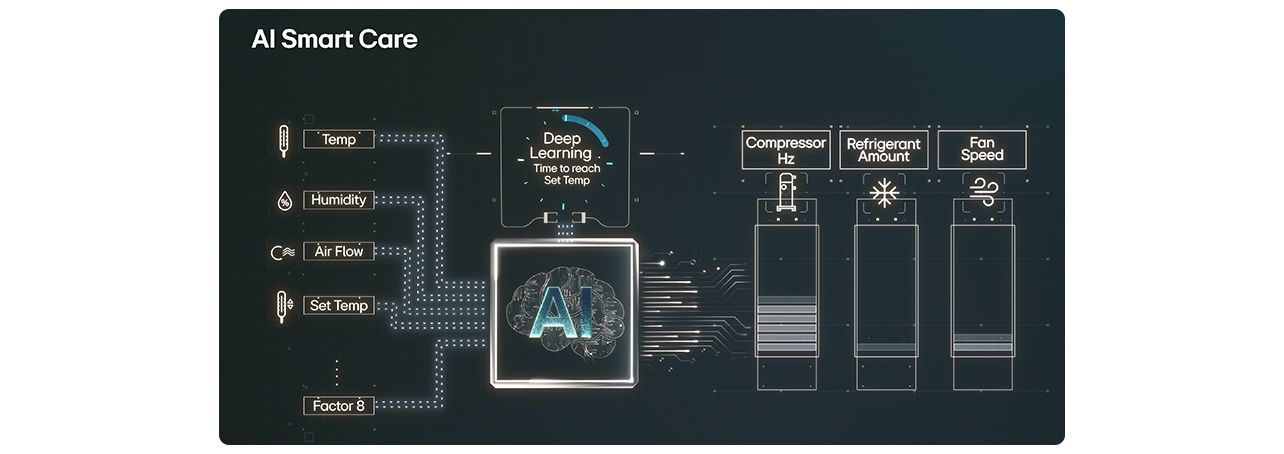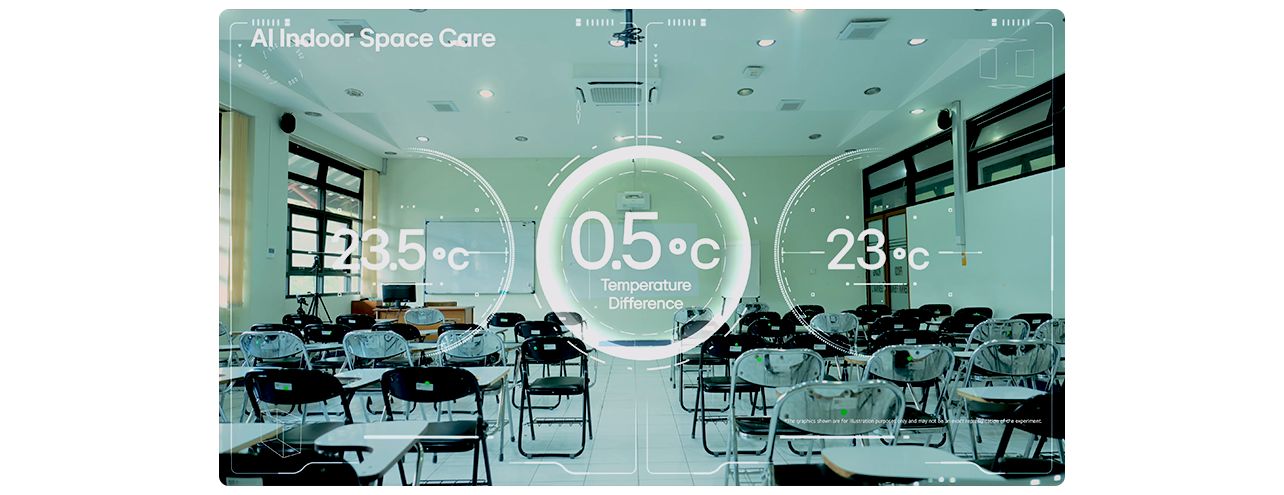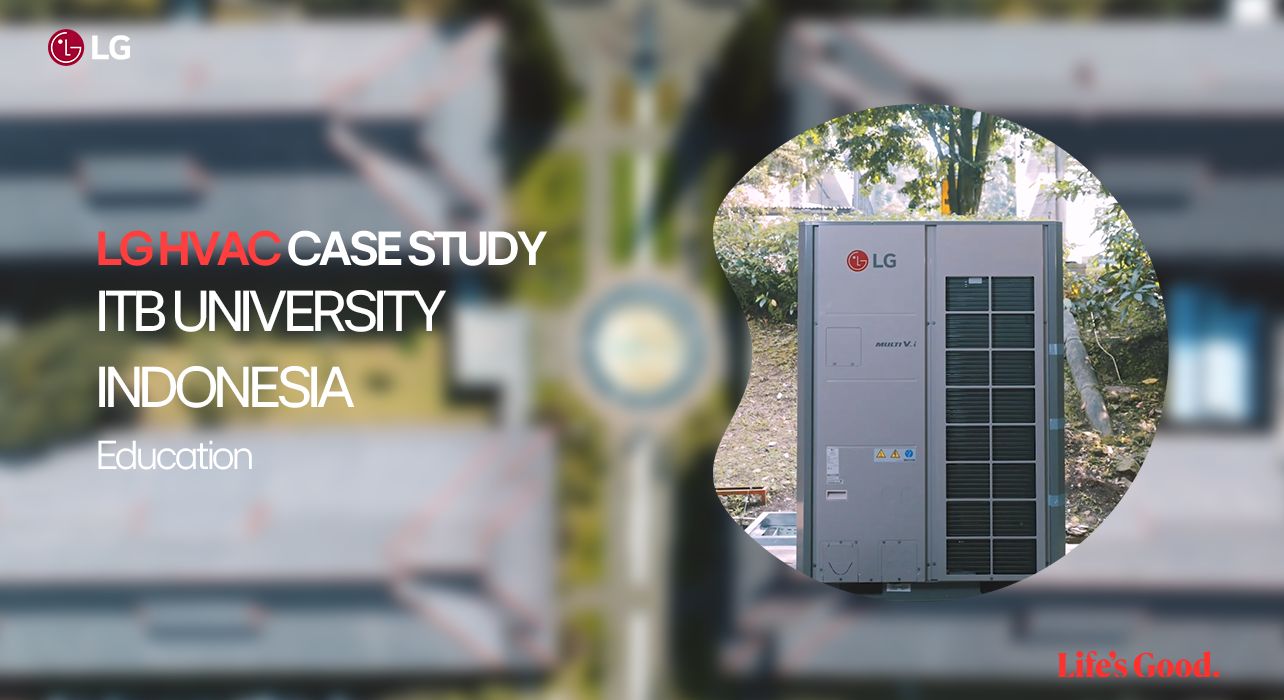We use cookies, including cookies from third parties, to enhance your user experience and the effectiveness of our marketing activities. These cookies are performance, analytics and advertising cookies, please see our Privacy and Cookie policy for further information. If you agree to all of our cookies select “Accept all” or select “Cookie Settings” to see which cookies we use and choose which ones you would like to accept.
LG Multi V i AI Energy Saving Project at ITB University

Institut Teknologi Bandung (ITB), one of Indonesia’s leading engineering universities, partnered with LG to test the AI-integrated MULTI V i system in a real academic environment. The objective was to measure how effectively it could reduce energy consumption and enhance indoor comfort.

The Challenge: Fluctuation of temperature and humidity
In ITB’s Labtek VI building, fluctuating occupancy and uneven solar heat gain created inconsistent temperatures and high energy use. The previous HVAC system often ran unnecessarily, prompting the need for a solution that could adapt in real time.

From Installation to Intelligent Operation
In ITB’s Labtek VI building, fluctuating occupancy and uneven solar heat gain created inconsistent temperatures and high energy use. The previous HVAC system often ran unnecessarily, prompting the need for a solution that could adapt in real time.

AI Smart Care
The AI engine analyzes eight key variables, such as temperature, humidity, air flow, and set temperature. Through machine learning, it calculates the time to reach the target temperature and fine-tunes compressor frequency, refrigerant flow, and fan speed. This enables rapid cooling when the load is high and energy savings when it is low, which is ideal for spaces with varying occupancy.

AI Indoor Space Care
The AI Indoor Space Care function groups indoor units according to environmental similarity. Units work together to balance temperature across the room, automatically activating or deactivating as needed. In the case of this site, temperature differences stayed within one degree Celsius without manual adjustments, preventing overcooling and saving energy.

Results Proven by Data
The performance of MULTI V i was monitored over a 90-day period, with the system alternating daily between Normal mode and AI mode. The Monthly Energy Consumption results clearly show that AI mode consistently required less energy to operate, even while maintaining stable indoor comfort across classrooms and laboratories.

The data on total energy saving highlights the impact more directly. AI mode reduced overall power consumption by 49.2 percent and lowered electricity costs by about 49 percent compared to Normal mode.
*These savings remained consistent across daily, weekly, and monthly patterns, confirming the efficiency of MULTI V i in a real-world academic setting.
*The results demonstrated in this article are based on the operation of one Multi V i (Model: ARUN140LTE6) and four DUAL Vane 4-Way Cassette units (Models: ARNU28GTBB4, ARNU42GTAB4) conducted from November 1st, 2024, to February 28th, 2025.
*These results are specific to the conditions and setup of the site, and may vary under different conditions.

ITB faculty praised the system’s performance, noting its ability to adapt and maintain comfort. For LG, the project showcased how AI-enabled HVAC can deliver measurable savings without compromising user experience, setting a strong precedent for data-driven climate control in institutional environments.
*This verification case study was conducted with sponsorship from LG Electronics.
Watch Full Video

- Previous
- Next
The URL has been copied to the clipboard.